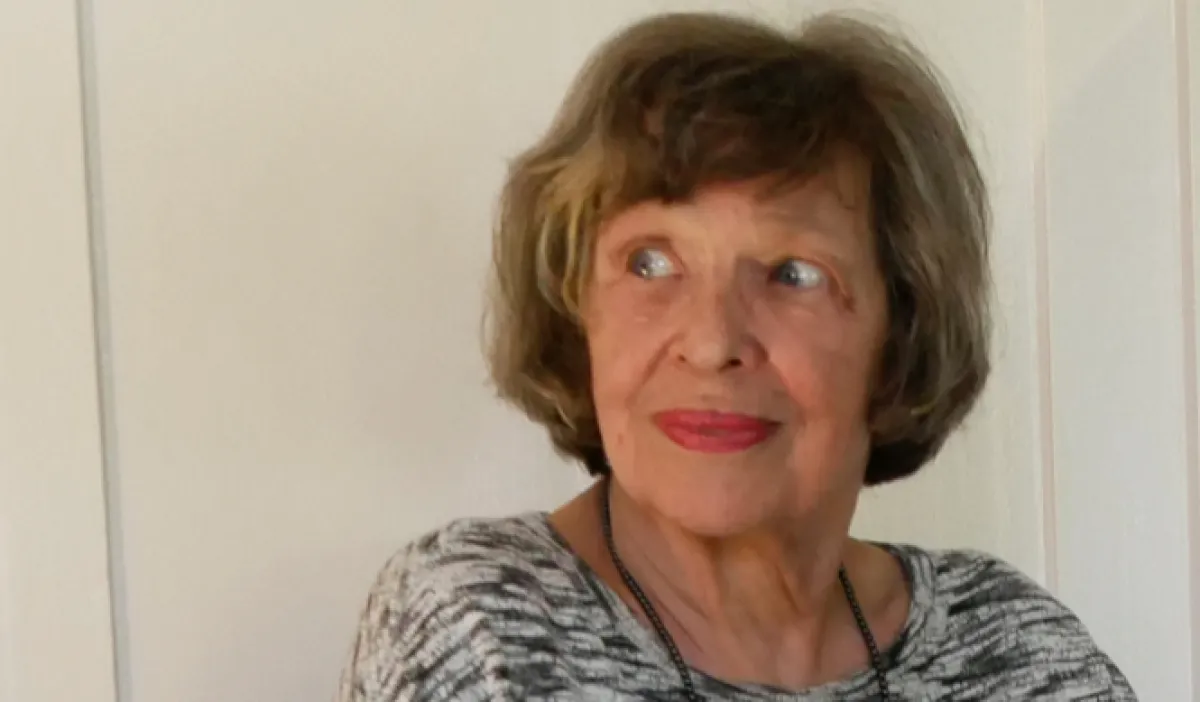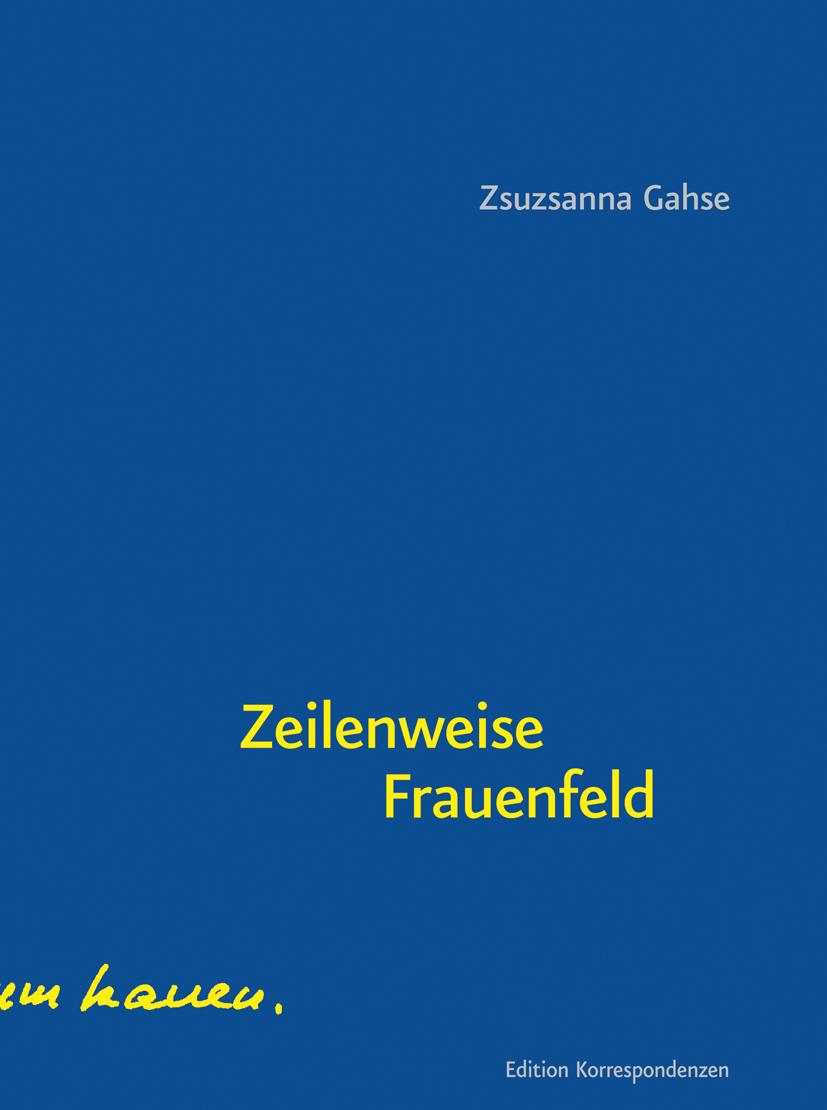Who’s telling the story now?

Zsuzsanna Gahse is an Austrian-German-Swiss author; she fled to the West with her Hungarian family in 1956 and has since lived in Vienna, Stuttgart and Lucerne - today she lives in Müllheim (Canton Thurgau, Switzerland). Her literary work is situated between prose and poetry, between narrative and dramatic texts. She has received numerous prizes and awards for her approximately 30 book publications and translations.
Around the mid-1980s, I read a novel by a Berlin author, well known at the time, and stumbled across her self-portrayal as soon as I started reading. In her book, this friendly, almost gaunt woman, mother to several daughters, told the story in the third person of a slim female character with several daughters. Her protagonist lived in a big city, and when she went to work in her bright summer dress, many people on the street turned to look at her. I won't go into further detail; suffice to say, the person described was the author herself.
The author's embellished self-portrayal and complacency were a disappointment. Although I could still appreciate her courteous manner towards colleagues, I didn't read any more of her books.
Since then, I almost always write in the first person (this had always been the case, although perhaps less zealously). I tell the story as an "I" that is only partially me. My narrators have very different professions and inhabit their own worlds. Some of them certainly represent my thoughts, but they have little to do with my past or present; in any case, I have no interest in recounting my life piece-meal. What would be the point?
Neurologically, it is now known that most memories undergo at least minimal changes in the brain as they are retrieved and aired, raising the question of what is a real memory - although it seems that some experiences can be recalled with razor-sharp clarity.
Scientific findings like this, which could be refuted by future research, are highly interesting; especially so for me with novels that claim to explain events logically, purporting to describe historical and political positions in a valid manner. Unfortunately, it is precisely this kind of representation that is currently in demand.
There are two concurrent issues here - who is narrating, oneself or an other, and how is the content presented?
In response to the second question, I should compile a list of authors with whom I like to chat in my own head. Among them is the great twentieth century writer Georges Perec, sadly hardly known in Germany, who even wrote some of his books in the form of a list.
But I go further back in time, to Cervantes and Don Quixote, and although in doing so I have landed in the sixteenth century, I think I am talking about a valid modernity. The book is not just about the daring knight or his servant Sancho. Cervantes intersperses his tales of the two vagabonds, with a series of inlays. We meet noblemen, innkeepers and shepherds, and a shepherdess plays a particularly unforgettable role. Poems and songs are added to the mix, and the whole sits well together, even reinforcing the realism. These stories leave behind an astonishing number of memorable images. In addition to famous ink drawings and paintings by Pablo Picasso or Honoré Daumier, there are other images that linger in the reader's mind, among them undoubtedly that of the beautiful shepherdess, perched high on a rock, declaiming on her voluntarily solitary way of life to the crowd assembled below.
Images! It would be an exaggeration to say that they are the be-all and end-all of storytelling. Music, intrinsic to every language, is also crucial, as is the pace at which the story unfolds - even if gradual, all speeds are related to emotions. But a fundamental element of narrative is image painting. I like to talk at length about topography, about the appearance of landscapes and urban areas, but in this case I will content myself with the keyword topography, since it belongs in the world of images anyway.
Deep down, everyone understands what I'm talking about, but it is so deeply buried that it has to dug up again every few decades.
 ---
---Zsuzsanna Gahse | Zeilenweise Frauenfeld | Edition Korrespondenzen | 124 pages | 24 EUR
And who is the person who tells the story through pictures, who is the narrator? An 'I'? It's quite possible. The aforementioned Perec, on the other hand, uses 'you' in A Sleeping Man. "You sit, bare-chested, on a narrow bench in your attic room, dressed only in pyjama bottoms ...", he says, for example, and continues with this 'you' from the first to the last page. 'You' is a pronoun, 'I' is a pronoun, and there are others too. 'Us', for example. In my latest book (Zeilenweise Frauenfeld) I write: "I am here, and us too, many of us, we are here" - and shortly afterwards: "but the others are also us, there is no other word for us." The search is on for other, as yet non-existent pronouns.
Cervantes narrates from behind the scenes. He himself remains invisible, and although 'I' appears briefly in the preface and later on, it is an imaginary narrator figure. However, the author's humorous view of his own era and the past is unmistakable. His subliminal humour begins right away by portraying his Don as a gentleman in love, a scrawny man trying to imagine love with all his might and obviously failing. His servant Sancho, on the other hand, is capable of love and understands his Don deeply.
As I consider details like these, I have a productive dialogue with Cervantes .And I'm certainly not alone.
On New Year's Eve, Shakespeare and Cervantes are sitting in my writing room on the first floor. They like to chew the fat together. E.T.A. Hoffmann holds court in the hallway. Last year, two filmmakers turned up here, one of them the slight, sharp Woody Allen. On the ground floor, next to Thomas Bernhard, sat Nathalie Sarraute, and Chekhov made a brief appearance. But he didn't like talking about the sharp divide between the Ukrainian and Russian languages. Next year, Beckett will be there, and I have a promise from Gert Jonke, who should definitely be read by everyone. György Ligeti will be coming for a second time. Last time, he said that they were not looking for masters for the younger ones to copy. What matters is the conversation between them all. And that's what I mean too. Literature in itself is a great conversation.



